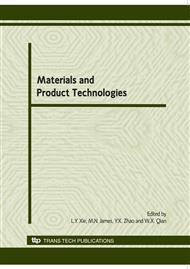p.261
p.264
p.269
p.274
p.278
p.283
p.289
p.294
p.299
Fatigue Crack Growth Rate of 16mnr Steel with Effect of Stress Ratio
Abstract:
Fatigue crack growth was simulated by using a newly developed unified model on the fatigue initiation and crack growth based on an incremental multiaxial fatigue criterion. The cyclic elastic-plastic stress-strain field was analyzed using the general-purpose finite element software (ABAQUS) with the implementation of a robust cyclic plasticity theory. The fatigue crack growth rates with respect to three different stress ratios were selected as the benchmark to check the unified model. The predicted results agreed with the experimental data very well. The insensitivity of the crack growth rate to the stress ratio is due to the fast mean stress relaxation.
Info:
Periodical:
Pages:
278-282
Citation:
Online since:
June 2010
Authors:
Keywords:
Price:
Сopyright:
© 2010 Trans Tech Publications Ltd. All Rights Reserved
Share:
Citation:


